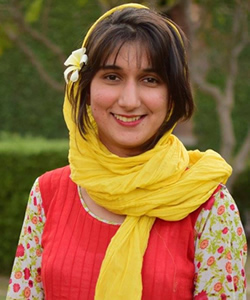
March 27, 2016—the day Lahore burned. The day Lahore was attacked for its very way of life. The day children’s shrieks of joy turned to screams of pain and confusion. An attack targeting Christians was in fact an attack on Lahore and its people. After that fateful incident in Peshawar in 2014, the government vowed they would never allow December 16 to happen again. Alas, Pakistanis were brought abruptly back to the cold and harsh reality: these terrorists would stop at nothing to butcher everyone in their way, including children. The fight against terrorism is far from over. The terrorists are still here and in sporadic but calculated attacks they strike and undermine the writ of the state.
Where Did We Go Wrong?
Terrorism in Pakistan has wreaked havoc on thousands. From the faltering economy to the throttling of cultural life, the security situation has impacted everything. The annual death toll from terrorist attacks has risen from 164 in 2003 to 3,318 in 2009, with a total of 35,000 Pakistanis killed between September 11, 2001 and May 2011. According to the government of Pakistan, the direct and indirect economic costs of terrorism from 2000 to 2010 total $68 billion. After dealing with countless terrorist incidents, in 2012 the government gave the army a green signal to start military operation Zarb-e-Azab against terrorists. Although the number of terrorist incidents has reduced significantly, militants still continue to attack, especially soft targets like the APS School in Peshawar, where the attack killed nearly 132 school children and numerous others. This suicide blast in Lahore’s park is the latest in a string of attacks rendered to spread confusion, fear, and panic in the population.
What Happened on March 27?
A suicide bombing killed at least 70 and injured more than 300 in a crowded space of a parking lot near the children’s swings of the Gulshan-e-Eqbal Park, which is one of the largest parks in Lahore. The responsibility of the attack was claimed by Jamaat-ul-Ahrar, an Islamist militant offshoot of Tehrik-e-Taliban, which stated they had planned an attack on Easter Sunday as part of an operation called Saut Ul Raad. This would now mark the beginning of a campaign against the Christian minority in Pakistan. However, according to the official count, more Muslims than Christians had been killed in this heinous crime. The attack took place at 6:30 p.m. local time, and a shortage of ambulances resulted in the wounded, which mainly consisted of women and children, being transported to the hospital in rickshaws and taxis. Eyewitnesses said they saw body parts strewn across the parking lot once the dust had settled after the blast.
The Response
Following the attack, scores of Pakistani citizens started coordinating efforts to donate blood and provide support to the families of the victims. Many Pakistanis ended up going to the hospital to donate blood, and soon the blood banks quickly became full at Jinnah Hospital, the main public hospital in Lahore to which many of the victims were brought. Cab services like Careem and Uber began providing free transport to those who wished to donate blood. Anthony Permal, a Pakistani Christian blogger, tweeted: “Every drop of blood donated will mix with the blood of the injured. Muslims and Christians will share their bodies tonight.”
Both the activist community and the media in the country began urging the masses to help the victims and provide them with food, water, wheelchairs, funeral services, and anything else they may need but might not be able to afford at the moment. A team of volunteers distributed 1,000 lunch boxes at various hospitals. HumAahang from LUMS, a student-led initiative against intolerance and extremism, visited the injured and distributed cards and flowers. Pakistani actress and activist Nadia Jamil visited the hospitals and distributed toys among the young blast victims. It was a heartening response and display of unity in the face of the heinous attempts that sought to create a rift between the Muslim and the Christian population. These attempts had failed: the people of Pakistan stood together in the face of adversity.
Conclusion
It is clear that terrorism will persist as a problem for Pakistan, but exactly for how long, nobody can predict. The international community can predict statistics and give dates on climate change, but nobody can answer when this ongoing spate of global terrorism will end. Until then, we will keep losing ordinary Pakistanis: men, women, and children.
In these times of uncertainty and confusion, there is a fading sensitivity and outrage directed towards the attacks. However, the recent response to this attack in Lahore has revealed people’s attitude regarding extremism and terrorism. No matter how many attacks occur, the vivacity of the human spirit, humanity, will triumph.
The most befitting reply to these terrorists would be to go about our lives normally and not succumb to fear that would lead to the abandoning of public places and spaces. In his inaugural speech as president in 1933, Roosevelt told an America shattered by the Great Depression that "the only thing we have to fear is fear itself – nameless, unreasoning, unjustified terror."
About the Author
Opens in a new window
